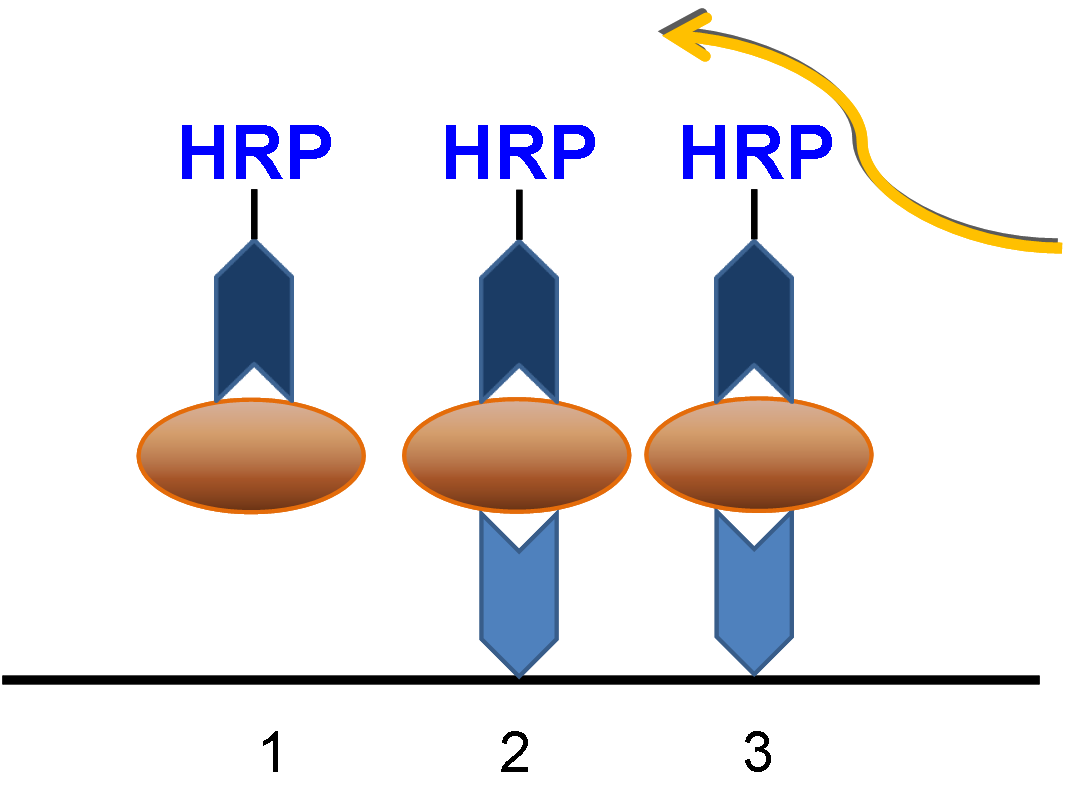|
|
Cat # |
hHEP-ELISA 96T |
|
Assay Range |
62.5U/L-2000U/L, Sensitivity 10U/L |
|
Kit Summary |
• Detection method- Sandwich ELISA format, and absorbance at 450 nm
• Species reactivity- Human
• Application- quantitative measurement of heparin in serum, plasma, cell culture supernatant, and other biological fluid. |
|
Detection Method |
Absorbance (450 nm) |
|
Species Reactivity |
Human |
|
Applications |
This ELISA kit is used to measure heparin in human serum, plasma, cell culture supernatant, and other biological fluid. |
|
Features & Benefits |
• Rapid sandwich ELISA format that measures heparin in human serum, plasma, culture supernatants and other biological fluids.
• 90 minutes assay time with only a one incubation step
• Detection Range: 62.5U/L-2000U/L, Sensitivity 10U/L
• Cross Reactivity: No significant cross-reactivity or interference between this analyte and its analogues was observed. |
|
Kit Components |
• Micro ELISA Plate
• Standards
• Standard Diluent
• HRP-Conjugate Reagent
• Chromogen Solution A
• Chromogen Solution B
• Stop Solution
• Wash buffer (20X)
• Microplate Sealers
• Sealed bags |
|
Storage Conditions |
4°C |
|
Shipping Conditions |
Styrofoam with ice packs |
|
UAGE |
RUO. |
Methods Overiew
 Protocol Protocol
ELISA Assay Steps
-
Apply samples to wells and mix the provided detection antibody streptavidin-HRP solutions.
-
Incubate for 60min.
-
Then wash 4 times.
-
Apply and incubate with chromogens, stop the reaction and measure at 450nm.

Heparin Structure
Native heparin is a glycosaminoglycan polymer with a molecular weight ranging from 3 to 30 kDa, with the average molecular weight of most commercial preparations ranging from 12 to 15 kDa. The structure consists of variably sulfated repeating disaccaride units. The most common disaccharide unit is composed of a 2-O-sulfated iduronic acid and 6-O-sulfated, N-sulfated glucosamine, IdoA(2S)-GlcNS(6S). This dissacharide makes up 75% of heparin from porcine intestinal mucosa.
Not shown below are the rare disaccharides containing a 3-O-sulfated glucosamine (GlcNS(3S,6S)) or a free amine group (GlcNH3+). Under physiological conditions, the ester and amide sulfate groups are deprotonated and attract positively charged counterions to form a heparin salt. Heparin is usually administered in this form as an anticoagulant.
Storage: 4oC, six months
Shipping: Ships in a styrofoam box with ice packs Overnight shipping required.
kw. human, ELISA, heparin, sandwich
|
 Products
Products Manuals
Manuals
-180x160.jpg)
